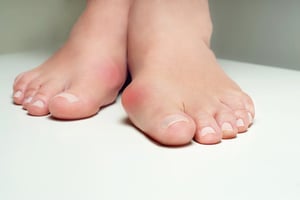
Bunion (Hallux Valgus) Treatment
Take the first step towards pain-free living with our specialised treatments
Bunion (Hallux Valgus) Treatment
Take the first step towards pain-free living with our specialised treatments
What is a Bunion?
A bunion, medically known as hallux valgus, is a common and often painful foot condition that can cause discomfort and affect daily activities. It is characterised by a bony bump that forms at the base of the big toe, causing the toe to deviate towards the others.
A bunion is a bony protrusion that develops at the metatarsophalangeal (MTP) joint at the base of the big toe. This deformity occurs when the big toe pushes against the next toe, forcing the joint of the big toe to stick out and enlarge. Over time, this abnormal position can cause the joint to become swollen, inflamed, and painful. Bunions can develop on one or both feet and tend to progress gradually, often worsening if left untreated.
While bunions can cause significant discomfort and interfere with daily activities, understanding their causes, symptoms, diagnosis, and treatment options can help manage and alleviate the condition. At UFIT Podiatry, our team of podiatrists in Singapore employs a comprehensive approach to provide supportive therapy and management for those with bunions.




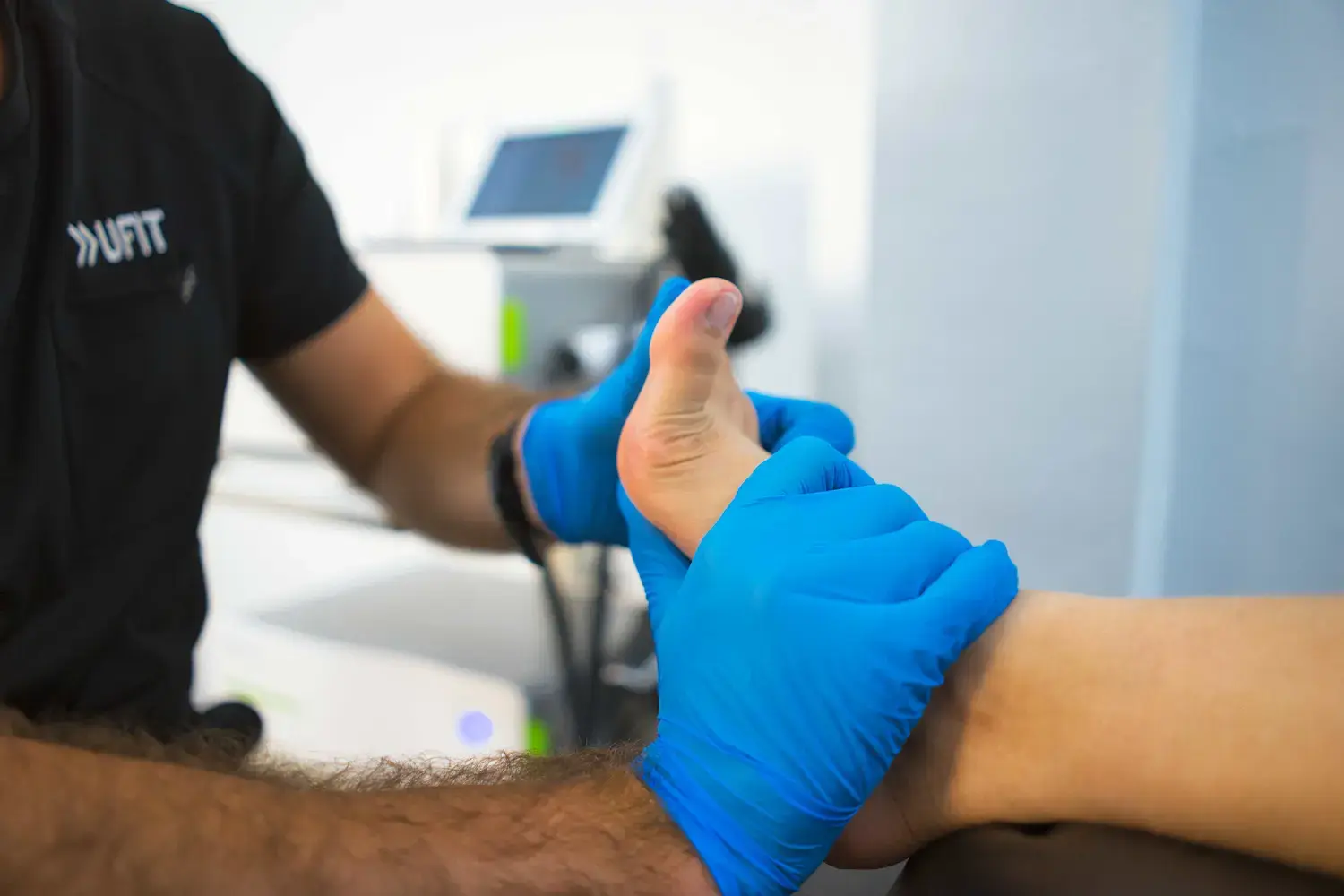
Causes of Bunions
Symptoms of Bunions
Recognising the early symptoms of a bunion allows for timely consultation with a podiatrist in Singapore. Symptoms can progress from a minor physical change to significant discomfort, and addressing them early can improve the effectiveness of non-surgical bunion treatment and therapy.
Bony Bump
Appearing as a visible bump (the head of the metatarsal bone) on the side of the foot at the base of the big toe, this bump can become more prominent over time as the big toe drifts inwards.
Pain and Tenderness
Pain can be persistent or intermittent, often felt as a deep ache within the joint or a sharp pain when wearing shoes. Discomfort arises from the pressure on the enlarged joint and the associated inflammation.
Swelling and Redness
The tissue and fluid-filled sacs (bursae) overlying the joint can become irritated and inflamed from friction. This results in localised redness, warmth, and swelling around the bunion, which are key symptoms your podiatrist will assess.
Calluses or Corns
As the big toe pushes against the second toe, the constant rubbing can cause protective layers of hardened skin (calluses or corns) to develop. These can also form on the bony bump itself where it makes contact with footwear.
Limited Movement
As the joint deformity progresses, arthritis can set in, leading to stiffness and a reduced range of motion in the big toe. This can make activities like walking, running, or even standing painful and can affect your overall gait pattern.
Numbness
In some cases, the enlarged joint of the bunion can compress small nerves that run alongside the toe. This pressure may cause occasional numbness or a burning sensation in and around the big toe.
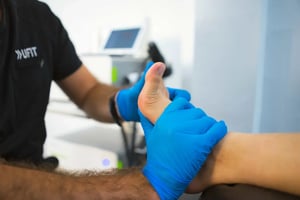
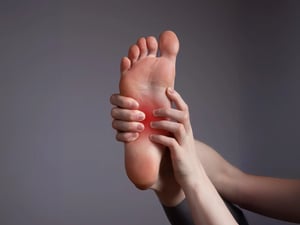
Causes of Bunions
Understanding the common causes of a bunion is an important step towards finding the right treatment. A podiatrist will consider these factors, which often involve a combination of hereditary predispositions, foot structure, and long-term external pressures, to form a comprehensive therapy plan.
If your parents or grandparents have bunions, you might be more likely to get one, as you can possibly inherit the foot structure that can encourage bunion formation. If bunions run in your family, you can consider a proactive chat with a podiatrist.
Certain inherited foot types, such as flat feet or overly flexible ligaments, can alter foot mechanics. This can put extra pressure in the big toe joint (MTP joint), which over time may encourage the joint to shift out of place and form a bunion.
Tight, narrow, or high-heeled shoes can force toes into an unnatural position, increasing pressure on the big toe joint. This can significantly accelerate the formation of a bunion or worsen an existing one.
Inflammatory conditions like rheumatoid arthritis can directly damage the cartilage within the MTP joint, making it unstable. Over time, this can cause the joint to drift out of position, leading to the formation of a painful bunion.
An old injury—like a sub, fracture, or dislocation—near the big toe or forefoot can disrupt the normal alignment and structure of the joint. This change can compromise joint stability, leading to the gradual development of a bunion, sometimes even years after the initial injury.
Our Approach to Bunions Treatment
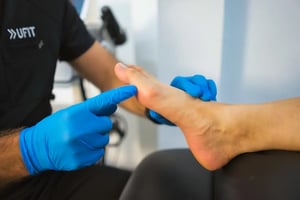
A detailed initial assessment is conducted to understand the patient’s condition, lifestyle, and any contributing factors. This involves a physical examination, gait analysis, and a review of medical history.
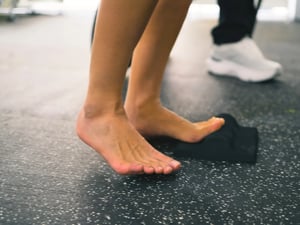
Based on the assessment, a tailored management plan is developed, combining conservative measures, physical therapy, and, if necessary, surgical interventions.
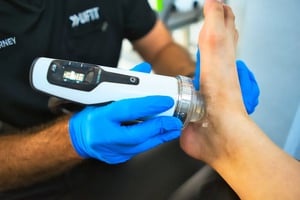
UFIT Podiatry offers advanced therapeutic options such as Radial Shockwave and Focal Shockwave Therapy.
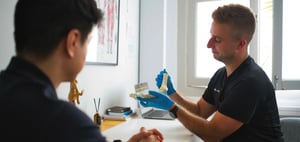
Patients are educated on proper footwear, foot care, and exercises to prevent the progression of bunions and maintain foot health. This proactive approach helps in preventing future issues and managing existing conditions effectively.
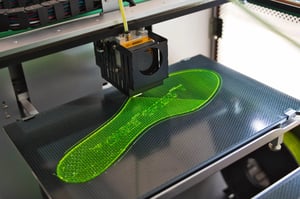
Custom orthotic devices are designed and fitted to provide optimal support, correct foot mechanics, and reduce strain on the bunion. These foot orthotics are created based on precise measurements and tailored to the patient’s specific needs.
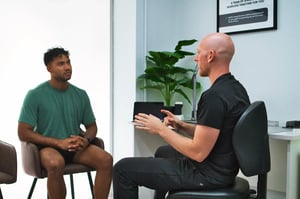
Regular follow-up appointments are scheduled to monitor progress, adjust treatment plans as necessary, and ensure long-term recovery and management. UFIT Podiatry emphasises continuous care to help patients achieve and maintain foot health.
Bunions, though often painful and disruptive, can be effectively managed with a combination of appropriate treatments and preventive measures. By understanding the causes, symptoms, and available treatment options, individuals can take proactive steps towards relief and improved foot health. At UFIT Podiatry, a patient-centered approach ensures that those suffering from bunions receive the best possible care, tailored to their unique needs. Through comprehensive assessments, advanced therapies, and personalised treatment plans, UFIT Podiatry helps patients overcome the challenges of bunions and achieve long-lasting comfort and mobility.
Our Approach to Bunions Treatment

A detailed initial assessment is conducted to understand the patient’s condition, lifestyle, and any contributing factors. This involves a physical examination, gait analysis, and a review of medical history.

Based on the assessment, a tailored management plan is developed, combining conservative measures, physical therapy, and, if necessary, surgical interventions.

UFIT Podiatry offers advanced therapeutic options such as Radial Shockwave and Focal Shockwave Therapy.

Custom orthotic devices are designed and fitted to provide optimal support, correct foot mechanics, and reduce strain on the bunion. These foot orthotics are created based on precise measurements and tailored to the patient’s specific needs.

Patients are educated on proper footwear, foot care, and exercises to prevent the progression of bunions and maintain foot health. This proactive approach helps in preventing future issues and managing existing conditions effectively.

Regular follow-up appointments are scheduled to monitor progress, adjust treatment plans as necessary, and ensure long-term recovery and management. UFIT Podiatry emphasises continuous care to help patients achieve and maintain foot health.
Bunions, though often painful and disruptive, can be effectively managed with a combination of appropriate treatments and preventive measures. By understanding the causes, symptoms, and available treatment options, individuals can take proactive steps towards relief and improved foot health. At UFIT Podiatry, a patient-centered approach ensures that those suffering from bunions receive the best possible care, tailored to their unique needs. Through comprehensive assessments, advanced therapies, and personalised treatment plans, UFIT Podiatry helps patients overcome the challenges of bunions and achieve long-lasting comfort and mobility.
ALL INDIVIDUALS
ALL INDIVIDUALS
We offer personalized, evidence-based lower limb care for athletes, active individuals, and parents seeking specialized treatment for their children.
We go beyond addressing your injury or pain. Through our Circle of Care, you can access our team of experts with a vast range of specialised experience and knowledge.
What to expect on your first visit
We use cutting-edge diagnostic tools to get real-time insights into your soft tissue, joints and structures to provide a fast and accurate diagnosis.
Post-assessment, you will receive clear and comprehensive reports detailing our findings. This will allow you to make informed decisions on your treatment plan.
Together with you, we formulate a comprehensive and personalised treatment plan that suit your goals and preferences.
Our Approach to Bunions Treatment
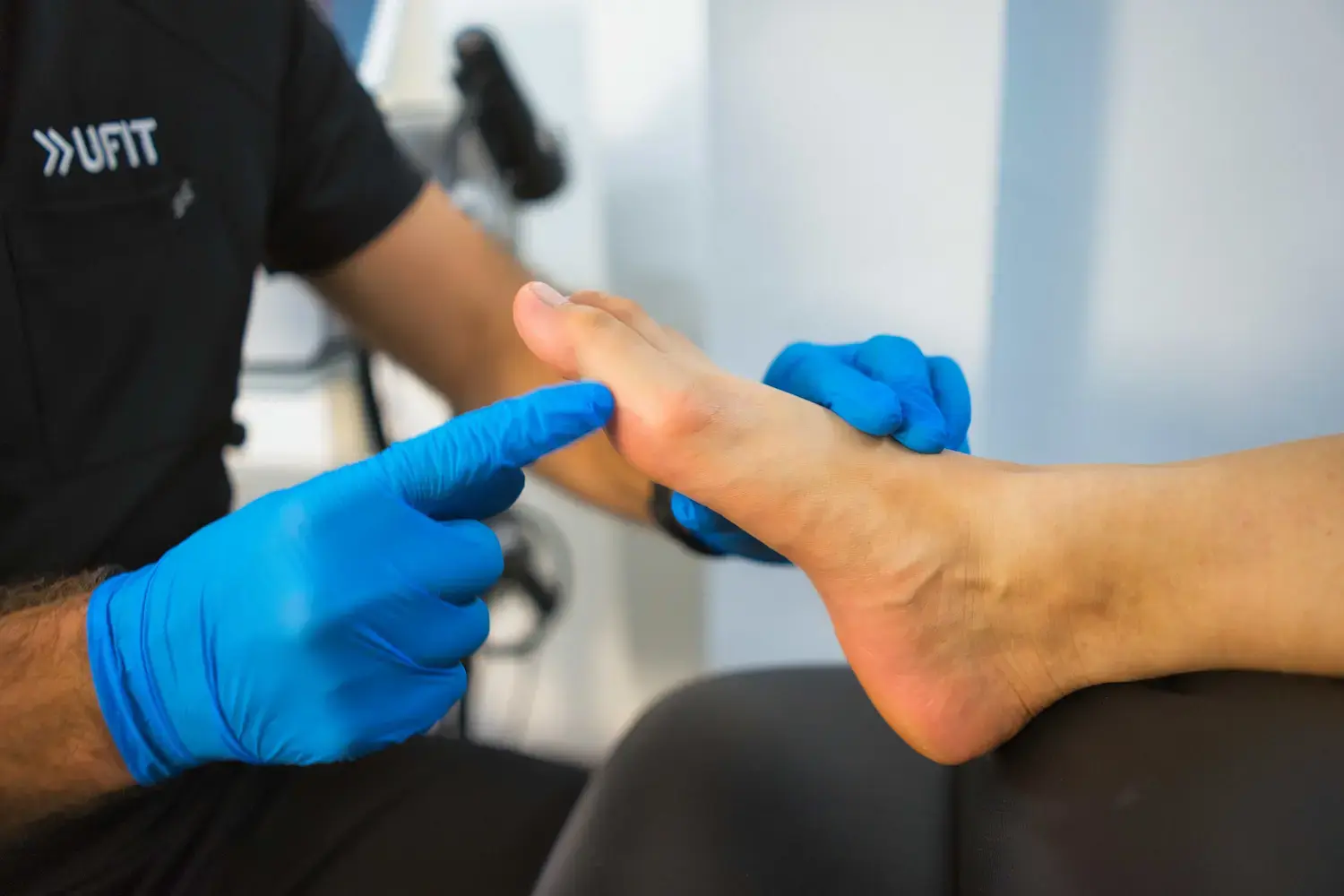
Step 1: Thorough Assessment
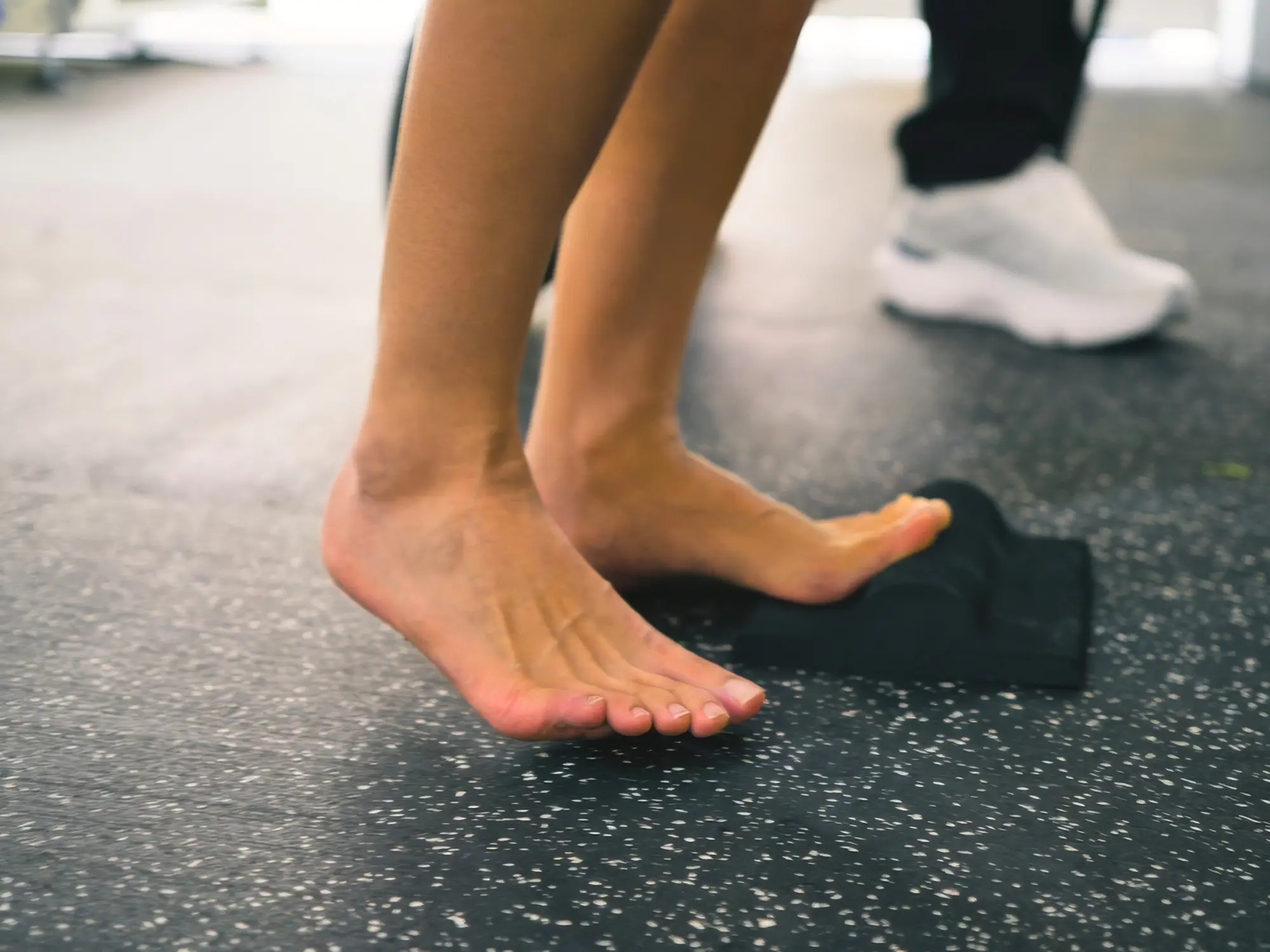
Step 2: Customised Management Plans
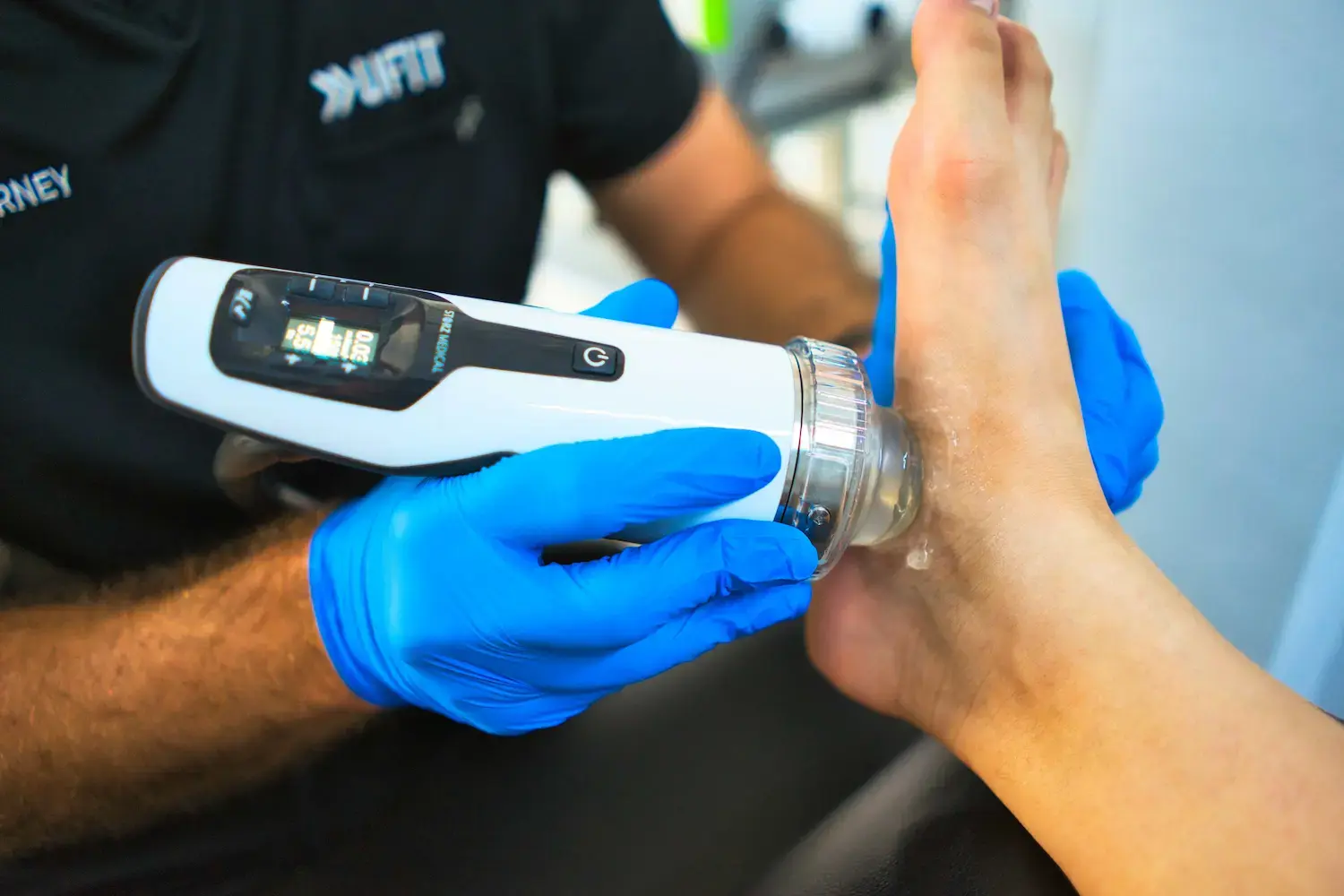
Step 3: Advanced Therapies
UFIT Podiatry offers advanced therapeutic options such as Radial Shockwave and Focal Shockwave Therapy.
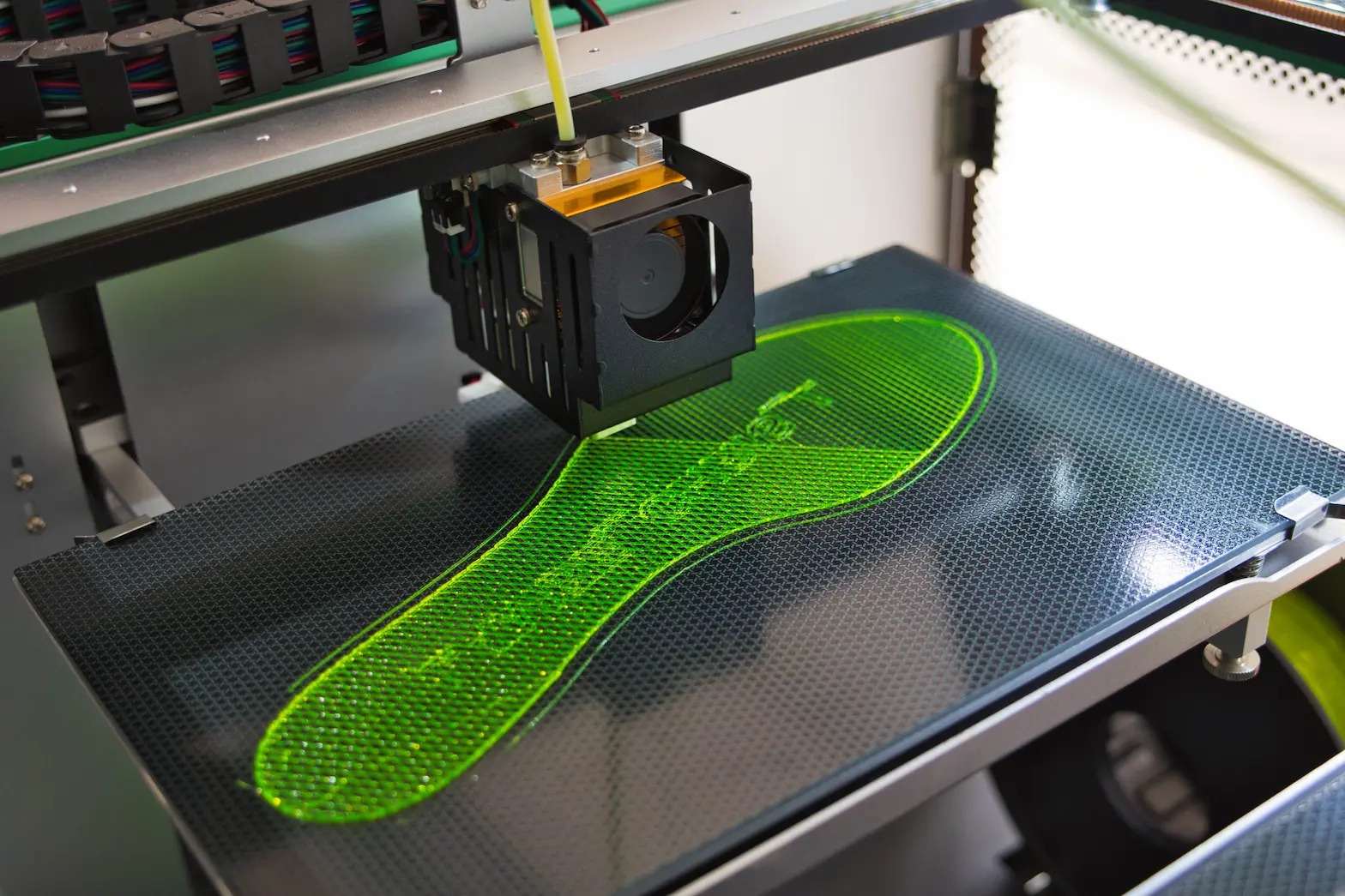
Step 4: Custom Orthotics
Custom orthotic devices are designed and fitted to provide optimal support, correct foot mechanics, and reduce strain on the bunion. These foot orthotics are created based on precise measurements and tailored to the patient’s specific needs.
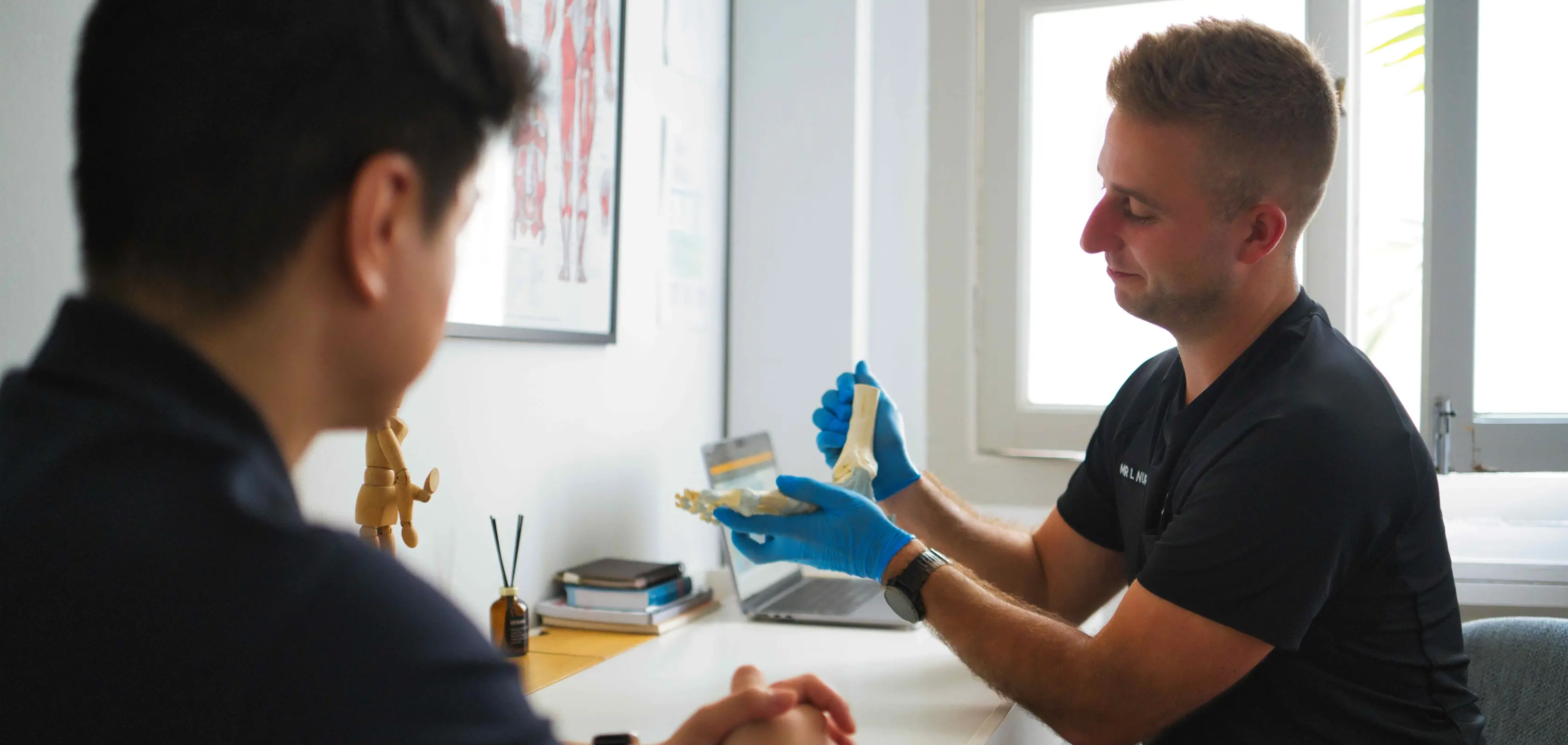
Step 5: Education and Prevention
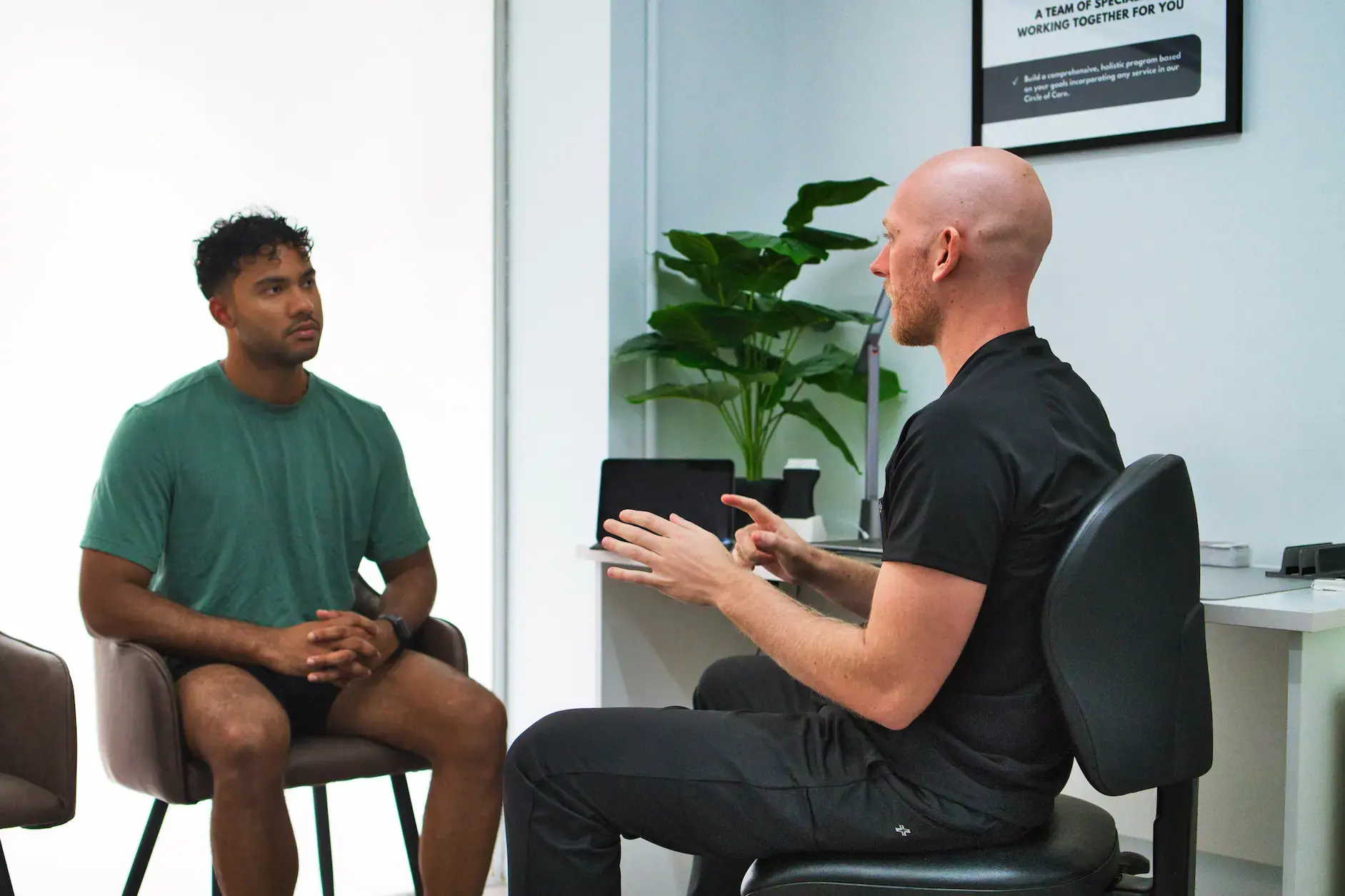
Step 6: Follow-Up Care
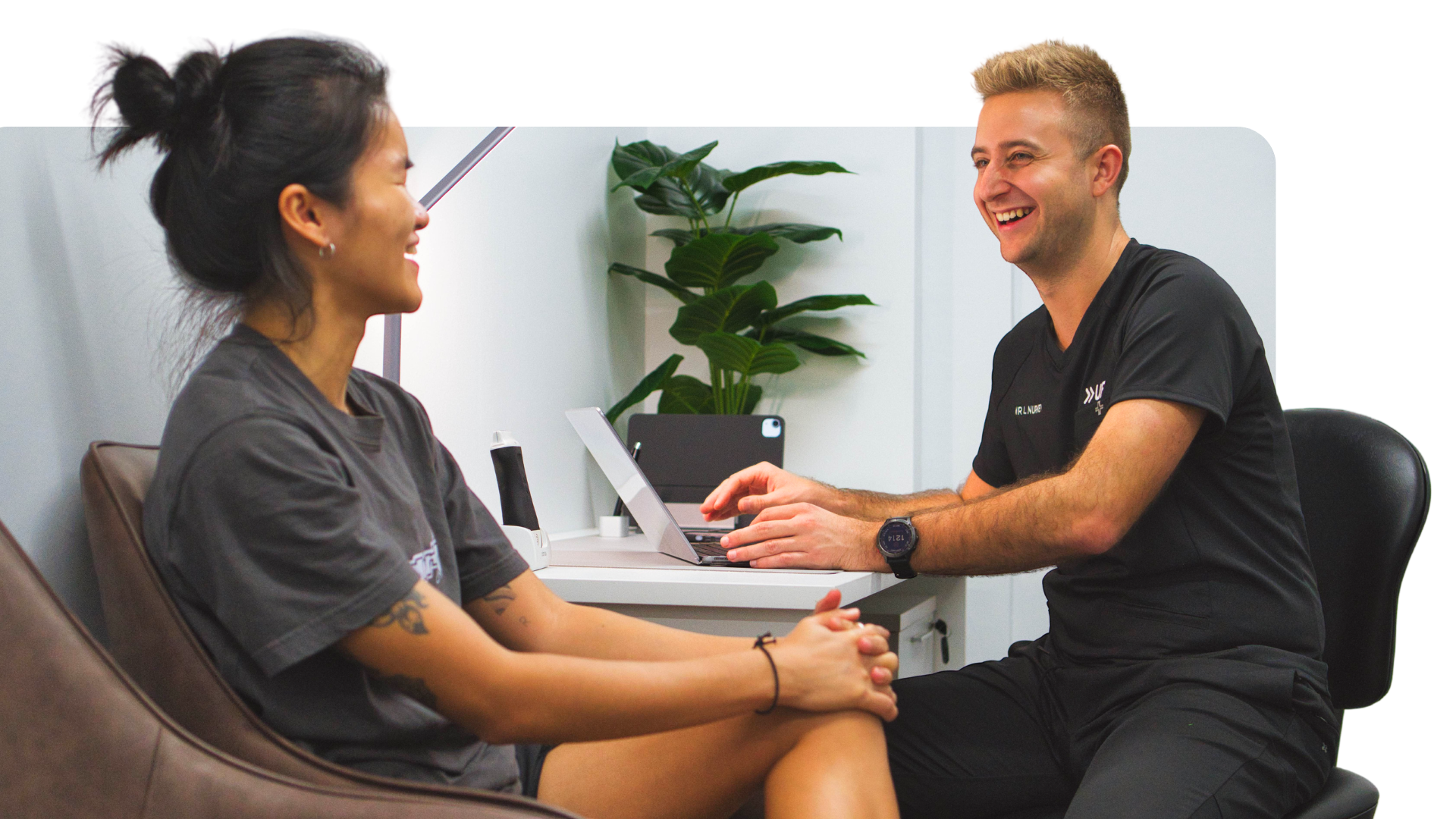
Book online & get $20 off your first consultation
- Personalised, evidence-based care
- Premium, central clinic in the CBD
- Experienced podiatary team
*Terms & Conditions:
- Valid for first time patients who have made prepayment at least 24 hours before the appointment
- Non-cancellable and non-transferable
- Applicable only for initial consultation & can't be used in conjuction with any other offers or promos
Why Choose UFIT’s Podiatry Services?
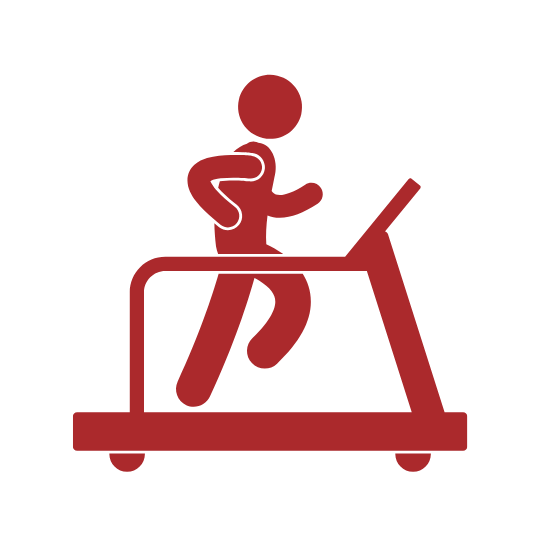
Advanced Technology
As a leading podiatry clinic in Singapore, we stand out by offering advanced gait analysis and in-house 3D-printed insoles, all accompanied by a comprehensive report to provide unparalleled insights into your lower limb biomechanics.

Elite Care for Every Individual
Our podiatry services offer personalised, evidence-based care for a wide range of individuals, including athletes, adults and children. So if you’re experiencing lower limb pain, our expert team can provide comprehensive support to get you back to doing the things you love.

Team of Experts with Optimal Results
We offer more than just solutions for your injury or pain. Through UFIT's integrated Circle of Care, you gain access to our team of expert podiatrists and other healthcare professionals, bringing together a vast range of experience and knowledge to achieve optimal outcomes for your foot and lower limb health.
Hear from our Clients
⭐⭐⭐⭐⭐
“I recently had an appointment with podiatrist Lewis Nurney at UFIT, and it was a wonderful experience. I’ve been dealing with a long-standing issue, but with Lewis’s expertise, kindness, and patience in listening to my concerns, I’ve finally been able to solve the problem and feel so much better.
The clinic is modern with high-tech equipment, and Lewis explained everything clearly, making me feel confident in the treatment plan. Now I’m feeling ready and prepared for the 10K Standard Chartered Marathon! If you’re looking for expert podiatry care, I highly recommend Lewis and the team at UFIT!”
⭐⭐⭐⭐⭐
“Came back to UFIT today after a year since my last consultation with Lewis Nurney. I was very relieved to know that my Achilles issues can be fixed with Lewis’s great advice. He would show me how to perform rehab exercises that will be able to help me throughout my recovery. I highly recommend UFIT podiatry to anyone in need of advice or help.”
⭐⭐⭐⭐⭐
“I had the pleasure of visiting Dr. Lewis through a recommendation and it turned out to be an excellent one, particularly after experiencing so many already. The thoroughness of his examination and help at each step of the process is beyond impressive. He took the time to listen to all my concerns and thoroughly explained my diagnosis and treatment options.
He made sure that I was well-informed and comfortable with the decisions being made without any pushing. I would highly recommend him for anyone in need of a skilled and caring podiatrist.”
Meet Our Podiatry Team

Lewis Nurney
Lewis is a highly experienced podiatrist with over 5 years of practice in Singapore, bringing his expertise to UFIT's comprehensive Circle of Care. As Head of Podiatry at UFIT Club Street, he specialises in sports podiatry, innovative orthotics for adults and children (including 3D-printed custom insoles, Paediatric AFOs and SMOs for pediatric flat feet), and minimally invasive procedures.
A first-class honours graduate from the University of Huddersfield (UK), Lewis holds dual certifications in Extracorporeal Shockwave Therapy (ESWT), Diagnostic Ultrasound and Running Gait analysis. Previously with East Coast Podiatry, he now provides patient-centred care at UFIT, specialising in non-surgical management of conditions like Foot Pain, Plantar Fasciitis and Achilles Tendinopathy in both children and adults, ultimately focused on alleviating discomfort and restoring optimal foot function.

Elliot Yeldham
Elliott is a dedicated podiatrist with over 7 years of healthcare experience, gained in both the UK's National Health Service (NHS) and private practice. He holds an Honours degree in Podiatry from Cardiff Metropolitan University (Wales), and brings a wealth of expertise to Singapore.
Specialising in Musculoskeletal (MSK) podiatry, Elliott's interests include sport podiatry and the management of gait abnormalities in both adults and children. He is also recognised for his skill and patient-focused approach in minimally invasive procedures for ingrown toenails and wart removal. Committed to a patient-centred and multidisciplinary model, Elliott actively stays informed of the latest healthcare advancements through clinical research and international conferences.
Book Your Bunion Treatment Now
Visit Our Podiatry Clinic
21 Club St, #01-01
Singapore 069410
+65 6225 5059
podiatry@ufit.com.sg
View on Google Maps



Frequently Asked Questions About Bunions
Not all bunions are caused by genetic factors, but they can play a role in bunion formation. While you don't inherit the bunion itself, you can inherit a specific foot type (like flat feet or flexible joints) that makes you more likely to develop one.
If bunions happen to run in your family, seeing a podiatrist for a preventative assessment is a good step.
You can't always prevent a bunion, especially if it's linked to your inherited foot structure. However, you can take steps to slow its progression and manage symptoms. The most effective strategies include choosing supportive shoes with a wide toe box, avoiding high heels that cramp your feet, and using custom orthotics if recommended by your podiatrist.
Bunion treatment in Singapore primarily focuses on relieving pain and improving foot function, usually without surgery. A podiatrist may recommend a therapy plan that includes footwear changes, custom-made orthotics for support, padding to reduce friction, and specific exercises. Advanced options like shockwave therapy may also be considered.
In most cases, yes. The vast majority of bunions are managed effectively with non-surgical treatment, to relieve pressure on the bunion and manage pain, allowing you to continue your daily activities comfortably. Surgical options are typically only reserved for severe cases that don't respond to other treatments.
You should schedule a visit with a podiatrist if you notice a bump forming at your big toe joint, or if you experience pain, redness, stiffness, or numbness. Early diagnosis is key, as it allows your podiatrist to prepare a management plan that can help to slow the bunion's progression and provide relief before symptoms worsen.
A bunion is a structural change, so non-surgical treatment aims to manage symptoms and prevent it from worsening, not make the bump disappear. If surgery is performed, recurrence is still possible, especially if lifestyle factors like footwear aren't addressed. Consistent, long-term management will be the best course of action to minimise bunion formation.
Ignoring a bunion can lead to worsening pain and other foot issues. The constant pressure can cause bursitis (inflammation), and the shifting of the big toe can lead to hammertoes in adjacent toes. Over time, it can also alter your gait, potentially causing secondary pain in your knees, hips, or back.
Yes, a bunion can possibly create a domino effect. As the big toe pushes inward, it can put pressure on your second toe, causing it to overlap and develop corns or calluses. It also changes how your weight is distributed when you walk, which can lead to pain in the ball of your foot.
Podiatry Blog
Check out the podiatry articles on our blog, written by our very own experts!

.png?width=301&height=187&name=Website%20Navigation%20Images%20(3).png)

-1.jpg?width=1984&height=1196&name=UFIT%20Club%20Street%20Front%20(4)-1.jpg)







